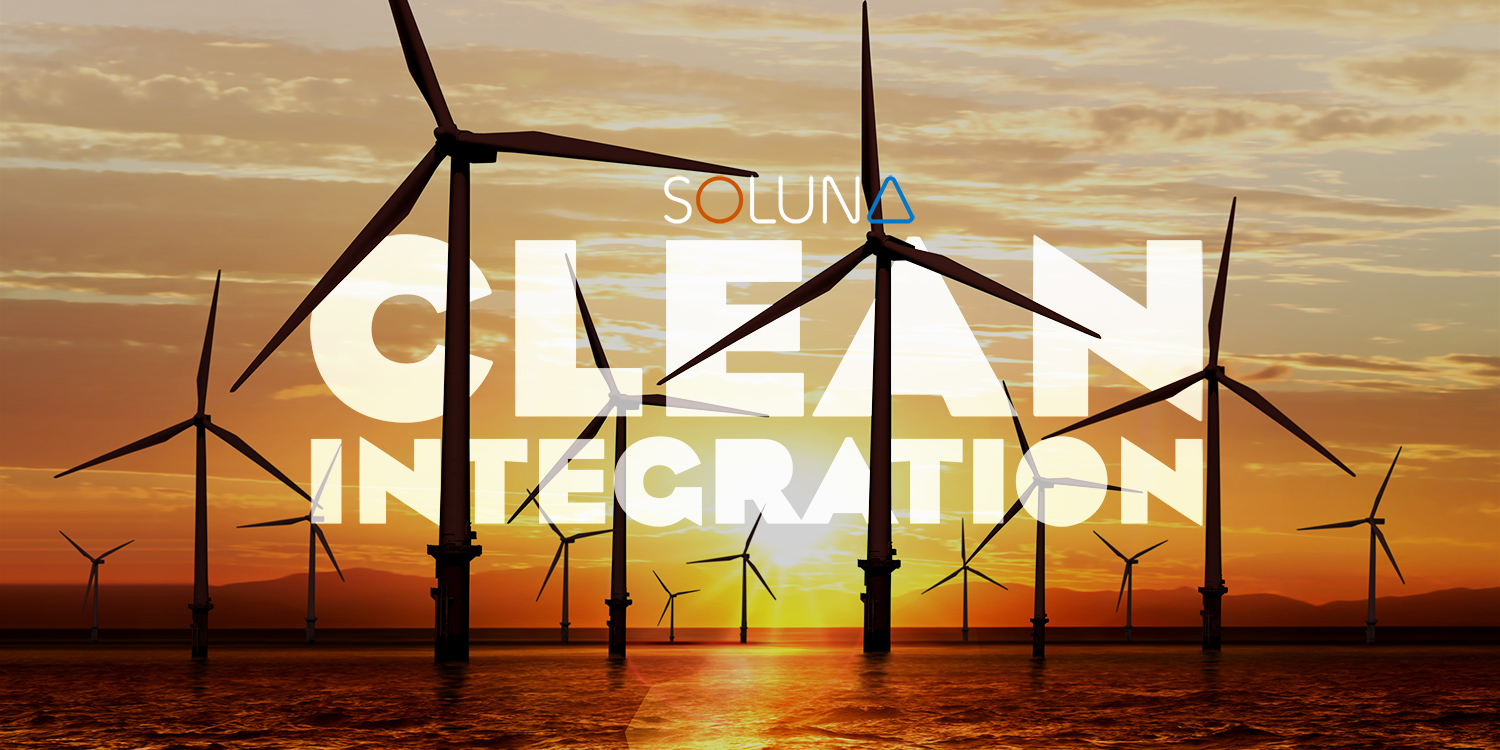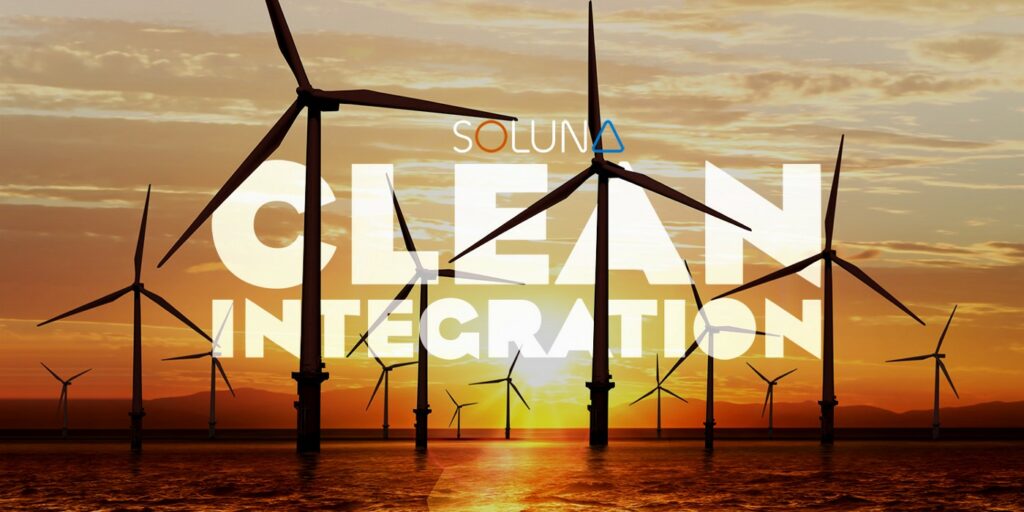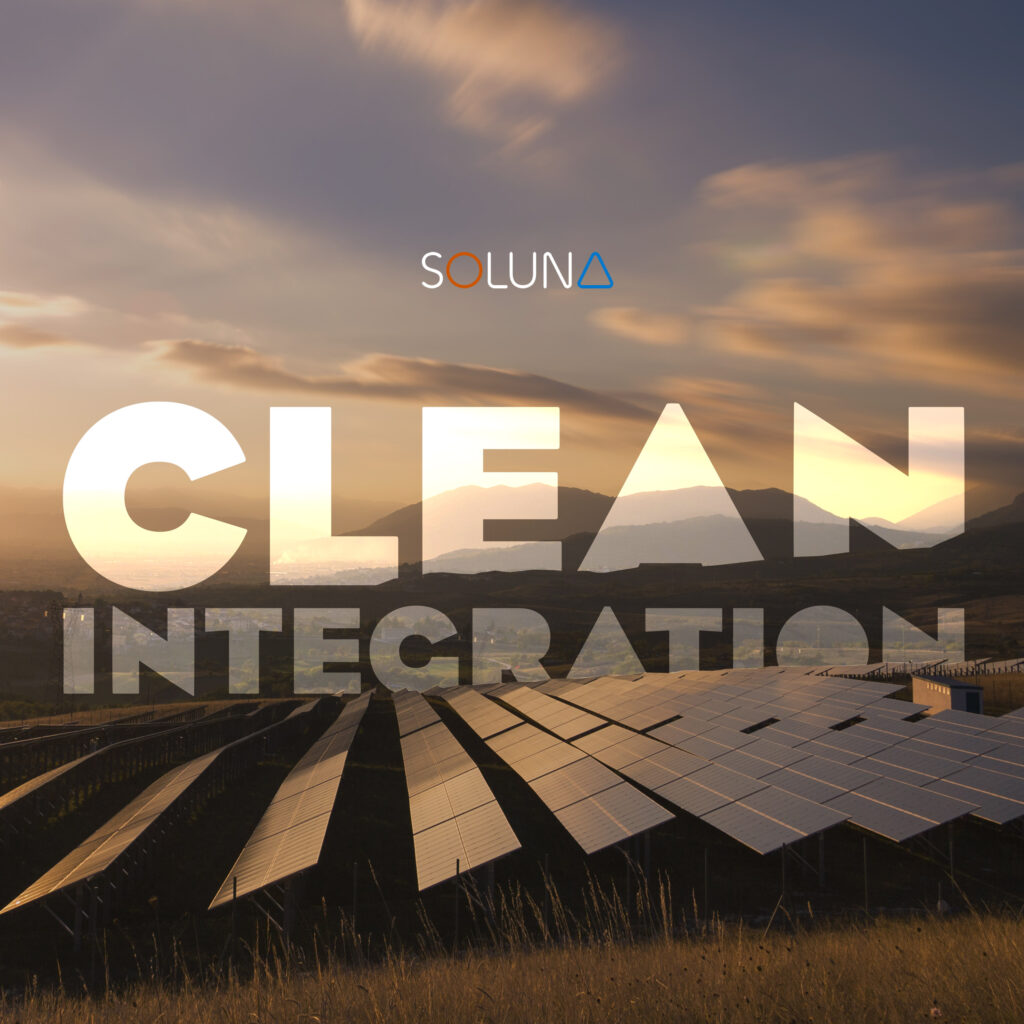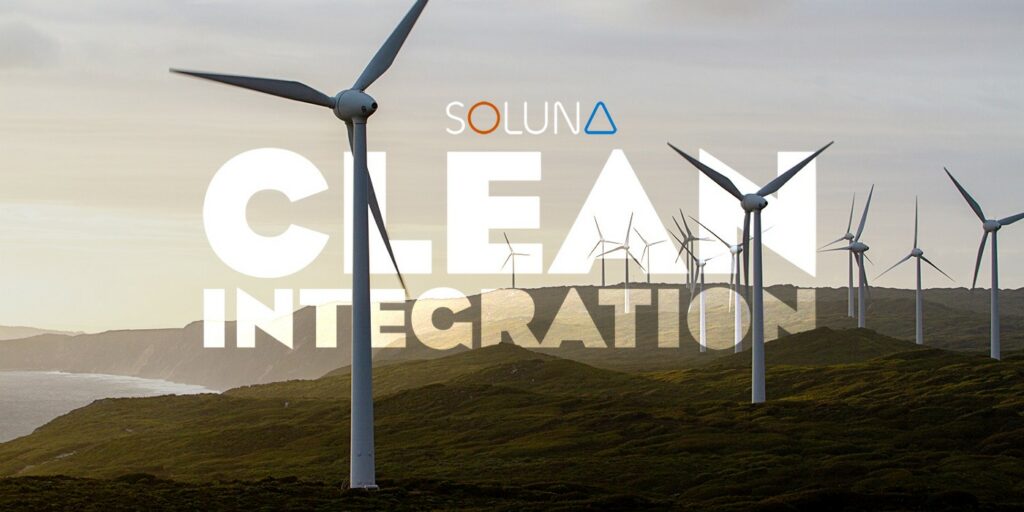Listen now on Apple | Spotify | SimpleCast
In this episode, we’re digging into Soluna’s carbon emissions.
An independent study has found that Project Dorothy, our Texas flagship data center, emits 18% less carbon annually than its data center counterparts and the ERCOT West territory.
John Belizaire, CEO of Soluna Computing and host of Clean Integration, is joined by Soluna’s VP of Corporate Development, Phillip Ng.
Our guest today is Rob Day, a friend of the show and co-founder and partner at Spring Lane Capital. (If you didn’t catch our first conversation with Rob, listen here.)
Spring Lane Capital is a private equity firm focused on investments for sustainable solutions in the energy, water, food, and waste sectors. Their investment in data center projects is part of their strategy focused on hybrid project capital for sustainable solutions in the energy industry.
(This transcript has been edited and condensed for print.)
[00:04:32] We had a conversation recently and Rob, you said something interesting. You said a lot of people are focused on trends like zero carbon. But for you, the key is additionality. Can you tell us more about this For listeners who maybe don’t understand the concept of additionality and renewable energy?
Rob [00:04:48] Yeah.
John [00:04:49] Why are you excited about that? And why is that important for you rather than zero carbon?
Rob [00:04:53] Yeah, happy to. And of course, zero carbon is a good goal too, right? To be clear.
What I’ve seen is that the data center industry, for instance, is targeting zero carbon. They’re targeting cutting their electricity consumption in half by 2030, which is going to be a real stretch goal to be able to achieve. When we think about whether something is truly a part of the solution set as opposed to just something that’s being waved at or even potentially making things worse. That’s where the additionality concept comes in.
So what is additionality? It’s the concept of saying if not for this investment or if not for this activity by these developers, this good would not have resulted. The best way to illustrate something that does not have additionality, for instance, let’s say I have my lamp on a timer and it’s going to turn off at 8 p.m. every night. At 7:59:59, I flick off the light switch myself. Do I get credit for having turned off the light throughout the night? No, because that light would have turned itself off anyway. Additionality says, okay, if that light was going to be on from 5 p.m. to 8 p.m. and you turn off the light at 5 p.m., you created additionality. You did something that wasn’t going to happen otherwise.
Specifically in the renewables context, in a climate context, that comes straight out of carbon offsets and accounting and figuring out the methodology for what is a negative good. Fortunately in renewable energy, we’re dealing with positive goods. So, the best way to think about additionality in that concept is if not for this action, that wind or solar farm would have retired earlier, or that wind and solar farm wouldn’t have been built, but now can be built. So what solutions do one or both of those two things?
John [00:06:50] That’s a helpful insight. I think we’re going to we’re going to come back to that as we jump into this LME study. We’re here today to talk about the independent study that we did that found that Project Dorothy, our Texas flagship, emits less carbon than a typical data center, or at least our counterparts in the ERCOT region.
Phil, can you share a bit more about the methodology and some of the findings in the study for our listeners?
Phil [00:07:23] My background is in finance, doing a lot of accounting and just kind of cash flows in my life, and I thought that stuff could be wonkish and it’s got nothing on the way people do carbon accounting.
I’ve been doing a lot of learning over the last few years, and last few months, about how emissions are accounted for. There are two concepts that we have incorporated here, and we’ve tried to be sort of intellectually honest about our emissions. We start with the basis of what we call Scope Two Emissions. Scope Two Emissions is the electricity, the carbon emissions associated with electricity, steam, heat, or cooling that’s purchased. In our case, we don’t buy any steam, heat, or cooling. We just buy electricity.
So, how do you account for the carbon emissions associated with our data center’s footprint? Well, our data center consumes power from three sources. The first is directly off the wind farm. These are electrons that are produced by the wind farm that otherwise would have been sold to the grid through a series of intermediary transactions that we enter with a local distribution provider, the QC, as it’s called. We buy electricity from the wind farm.
We also buy electricity from the wind farm in a different way. There is power that would have gone that cannot go to the grid because the grid can’t absorb it. So, the wind farm is producing. But in the period that the wind farm is producing, there are a lot of other electrons trying to make their way onto the grid. The grid operator tells the wind farm, Hey, no, you can’t put any electrons on the grid or you can’t put this percentage of your production onto the grid. We buy those as well. So those are the first two legs of our consumption stool.
And then the third one is pulling backward from the grid. When the wind farms not producing. We need electricity because we have to meet certain, as always, in our agreement. So, we pull backward from the cockpit into our data center of those three stools.
If you were to calculate our Scope Two Emissions, the first two are not emission-producing. Wind farms have zero emissions, and so you get zero emissions for those two. The third one, which is the grid generation, you get an emissions factor. As it turns out, we have very little emissions we produce under that metric. About 70% of our electricity is being pulled from the wind farm. The megawatt hours that pull off the grid are cut. CO2 per megawatt hour is rather high relative to the rest of the United States. But given it’s such a low percentage of our overall consumption, we end up with like 0.12 to metric CO2 tons per megawatt hour. And that is, you know, very low compared to the rest of the U.S. grid, maybe 3% per megawatt hour relative to the US grid. So, a very low carbon footprint.
That is where a lot of people stop. We take it one step further and this comes back to Rob’s point about additionality. We also say while we recognize that the energy we’re pulling off the wind farm that could have gone to the grid is carbon-free, the fact that it’s not going onto the grid triggers some carbon emissions somewhere because the load on the grid hasn’t changed. Fewer wind fractions are going onto the grid, so somebody else has to come online as a result.
We worked with a third-party provider who does an analysis called Locational Marginal Emissions (LME). As a result of your load being there, what are the additional and incremental emissions that you’ve generated? So they do apply a credit, an emissions factor, to that wind that otherwise would have been sold to the grid. They say, however, that the emissions factor has several additional attributes that we need to bear in mind, number one. And the record as a whole has an emissions factor, but you are in a specific point of the grid that happens to be renewable rich. So we’re going to give you a benefit or a credit for the location of your node in New York, which happens to be renewable. The other thing that they give us credit for is that we have a flexible load. So we curtail during peak periods of high traffic when there’s a lot of demand on the grid. Typically those high-demand periods get filled in with heavy fuels, natural gas, and other products that tend to be carbon intensive. And because we don’t operate in those high-demand periods, we get an additional credit against the overall ERCOT emissions factor. Then lastly, of course, they do recognize that some of our energy is curtailed, and the net comes out with a slightly different analysis that analysis says that we have. An emissions factor of 0.316 CO2 metric tonnes per megawatt hour, and that’s relative to the ERCOT grade of 0.37. That’s how we come up with this statistic we’re saying we have a reduction of a certain percent versus an average data center in the ERCOT grid system.
Rob [00:15:00] So basically, to put it another way, just to oversimplify because, yes, you could see from everything Phil just said, get your head spin. Because of the specific design of the Soluna data center, because of the specific location, and because of the specific relationship Project Dorothy has with the host wind farm, if you were to have built another standard data center that didn’t have those aspects, it would have resulted in more emissions effectively versus this 18% savings.
John [00:16:07] Now, the data center is also you alluded to the flexibility, Phil, which we got credit for. But that flexibility is also a powerful tool that can be leveraged by the grid to help it absorb more renewable energy. Plants like the ones that we’re co-located with, that probably in the long term as this technology gets used more and more is an additionality element too, right? Because if it were not for this technology being available, some sites may not have been built or less renewable, would make it onto the grid. Is that a good way to look at it?
Phil [00:16:45] To be clear, we started this company with the thesis that flexible computing could allow for a quicker transition to a low-carbon or zero-carbon grid. I think two impacts are not counted in the LME study.
The first one is what does the grid need on standby and to call upon in periods of peak demand? And what does that mean for infrastructure investment? If you think about your grid mix, you would start with, okay, I have my nuclear and I have my hydro. Those are ATC generation sources or, you know, sources that I can call on that are dispatchable to match my load. On top of that, I have wind and solar, which are kind of intermittent. They come on and then they come off and they come on, they come off.
Then I have a very complicated matching equation that I need to do. As load rises and falls throughout the day, I need to fill in the differences between those several zero-carbon sources. I could do that in a couple of different ways. One way is, and as it’s most commonly done today, I would have peaker plants and I would have natural gas plants, which can both dispatch very quickly to respond to those shortfalls in the difference between demand and supply.
In the medium term, I could solve that problem by adding batteries that can fill in those peaks and troughs. Then in the longer term, I could solve those problems with things like green hydrogen plants and transmission upgrades. And those are sort of the tools in the toolkit that are available right now.
There is a there’s another important available tool, which is the so-called demand response. McKinsey says that to get a zero-carbon grid, if we didn’t have demand response, it would cost something like 1.5x more investment in the grid to get to a zero-carbon grid. So, it’s a really important piece. What flexible computing does and what’s exciting about it is, you know, as opposed to having to add up, you know, 60,000 thermostats or AC units or refrigerators or whatever.
You know, I have one blocky load that’s 5000, two gigawatts, whatever, that can turn it on and off very quickly. Instead of trying to supplement the supply, and the generation sources, I can reduce the demand and turn it down very quickly to get to that supply-demand balance that I need to operate the grid that reduces the need for, in the near term, additional natural gas plants.
There’s a lot of talk in ERCOT about how the natural gas fans are not very happy with these flexible loads that are coming online. And in the medium term, it may reduce investment and investment needs on transmission in batteries and even green hydrogen. That’s that sort of additionality, let’s call it 2.0, that’s really exciting.
Additionality 3.0 is a different topic. It’s just the simple idea that in the future these wind farms will have been more profitable. Therefore, since the returns are more attractive, they will attract incremental capital to the space and they’ll allow for wind farms that maybe wouldn’t have gotten built. If you think about somebody out in West Texas where we are, there is a ton of new generation coming online of wind and solar. They all produce at the same time. When a wind farm in that area is getting to the end of its life, it might say, geez, I don’t really have a good sense of how much of my energy is going to be curtailed going forward. I know at some point all these wind farms are going to come off their PPA’s and they’ll be like a race to the bottom as people try to sell up this energy. Maybe I’ll decommission my wind farm.
Because they have a flexible load here that will take all the energy that can be produced, they might say, Hey, instead of doing that now, it makes sense for me to repower this wind farm and to add more turbines or to upgrade the turbines that I have. Or they might build another wind farm nearby. That is really exciting because while we may consume a large fraction of the electrons being generated by that asset, fundamentally some of those electrons are still going to the grid. We will disappear when there are periods of peak demand. It’s additional renewable fractions that otherwise wouldn’t have gotten built. So, those are sort of kind of additionality case 2.0 and 3.0 and that’s what gets us excited. That’s kind of the future that we’re trying to drive towards.
John [00:22:18] Thanks, Phil. Rob, you’re in the sustainability space and I’m sure it’s always a challenge, especially for young companies to demonstrate how well their technology works to reduce carbon or to help with additionality.
What do you think about the approach and the results? How would you have our listeners think about it?
Rob [00:22:48] The approach of trying to assess the carbon impact?
John [00:22:51] Yeah, exactly.
Rob [00:22:52] This LME approach is specifically for assessing marginal emissions at a particular spot on the grid. You know, that’s still relatively new. But now getting to a point of being robust and pretty thought out. The real key is that it’s now not talking about, okay, the U.S. as a whole or even like ERCOT as a whole, what the grid makes them instead at this particular spot, and what does that mean? Which gets you into more and more levels of sophistication.
I think it makes a lot of sense to try to do what you guys have done, which is, okay, let’s take just a narrow look, and then let’s look a little bit broader and a little bit broader. I happen to think that the impact is going to be on that last part that Phil was just describing: Building Dorothy great, building a hundred Dorothy’s, that’s when you start to get into impact.
18% savings versus an incumbent approach, I mean, that may sound like a small number, but if you put it in the context of what I described earlier about how by 2030, now over half a decade away, the data center industry is hoping to just cut things in half. Well, that would get you, you know, more than a third of the way there. So it’s not a complete solution by itself, narrowly defined. But it really helps.
The other thing then is, like I said, just really encouraging the extension of existing wind and solar farms. Their commercial life span and especially encouraging the building of new ones. We have all the wind and solar resources we need out there. The issue is transmission, right? You know, we’ve all seen that picture where somebody takes a very small corner of Utah and says if we could just, you know, cover this small area of Utah with solar panels, we could supply all of the United States electricity power demand. You know, the problem is, how would you get it to Chicago? How would you get it to Boston? Or in this particular case, how would you get it from, you know, two hours outside of Amarillo to Dallas?
If we sit around and wait for transmission to be built, that solves that… I’m not going to be alive when and if the transmission issue gets solved to that extent. I have hopes that over a couple of decades, it can be in place… So being able to very quickly put the flexible load on there, and especially the way that it’s a hyper-efficient design from an operational standpoint that gives it a leg up, but especially that it’s designed specifically for this kind of intermittent use means it goes right to the heart of assisting the wind and solar farm developers and operators, and that that creates a nice incentive. That’s what I’ve liked about it from the beginning.
Look, I’ll give an anecdote to address where I am and I’ll just say there’s the caveat. I’m speaking for myself. I’m not speaking for Soluna and I’m not even necessarily speaking for Spring Lane… When your colleague Dip Patel whom I’ve known for years reached out to me a couple of years back saying, Rob, you got to meet this green computing startup. I was like, sure, buddy. Okay, I’ll waste an hour of my life to hear this story and say everything that’s wrong with it. But once I had that hour to hear your background in wind farm development and how you approach computing as a solution to this curtailment issue, that’s just going to double over the next ten years in ERCOT anyway. And that you had this specific design that was tailored for it. You know that that’s where I walked out of that meeting saying, you know what, this is what I take very seriously. Because I was very surprised at the thoughtfulness and the impact that I heard in that hour. Plus, of course, you know, we’re in this to make returns and those data centers seem to be running pretty good, too. So, not a bad thing either as an investor.
John [00:27:25] Phil, there was this New York Times controversial study out there on the efficiency of Bitcoin miners. We do Bitcoin mining in our facilities. That study triggered our motivation to go do this study of our facility. They did a similar sort of LME analysis on some of the Bitcoin miners in Texas and other parts of the country.
What’s your perspective on well, how do we compare? How did it read to you after doing the analysis with our independent study partner?
Phil [00:28:01] From my perspective, we started this company out with a mission and we want to do something that we think is good for the planet. When you get money involved and you’re trying to build a company, I think a lot of times it gets hard to be intellectually honest with yourself. Especially when you’re not compensated to understand something. When I was reading that article, I was really struggling with it. I didn’t agree with many of the conclusions.
They’ve put a standard out that they believe is correct, and we want to at least understand where we would line up on that standard. That was really what triggered this LME debate. Basically, to summarize the extent of the argument, most of these Bitcoin miners are going to say, hey. Our grid mix is X – We’re 60% carbon-free, 55% carbon-free, 70% carbon-free – whatever, based on the average of all the different sources of electricity that we consume from. Therefore, since the overall grid is maybe only 30% carbon-free or less, you know, we are greener and we’re helping green, green the grid and call additional renewables onto the grid by increasing load.
Watt Time, the company that performed the analysis for The New York Times, they said, well, no, you can’t just say this is your renewable fractions because those renewables were there before you came there. So you didn’t you didn’t create those renewables. You’re calling additional resources onto the grid. The tool that’s used to set the clearing price data, the clearing price, and generation targets for ERCOT supply is public, right? So they say, okay, these are the resources that bid in. Here’s the price that bid in. Because this load was online, here’s how we move up the supply curve. We’re going to give you we’re going to give that consumer 100% of the carbon attributes as a result of being there. So they came back with these very, very high fractions.
Number one, any load, regardless of crypto of non crypto, is going to have that. There’s a lot of load coming into the grid. We’re trying to electrify everything. We want to we want to have two-thirds of our cars be electric vehicles by 2030. We want all these heat pumps. We want in-home batteries as opposed to backup generators. We want you to use batteries on your lawnmower and your leaf blower. So, any load is going to experience that. That’s objection number one that I had with this.
Number two was they didn’t give anybody credit for the curtailment ability. They said it didn’t really count, or didn’t really have a material impact.
Nevertheless, that was what we set out to see. We wanted to see where we stood up against this ranking. So we said, okay, we find this (for all the reasons I just laid out) standard punitive, but let’s see where we land on it. As I mentioned before, we have almost 20% less carbon than a standard data center in loads on ERCOT West. We would have been number two, out of I think 50 assets, that they ranked. And the first asset was nuclear-powered. They’re not going to have a carbon footprint or a significant carbon footprint. So, that’s kind of where we shook out along those lines.
Listen to the full episode here.
LEARN more by visiting Soluna’s Resource Center.
WATCH our latest updates and insights on YouTube.
FOLLOW us on Twitter and LinkedIn to continue the conversation.
LISTEN to our podcast Clean Integration where we cover this topic and many others. Be sure to leave a review and rate us!
SUBSCRIBE to our weekly newsletter.




